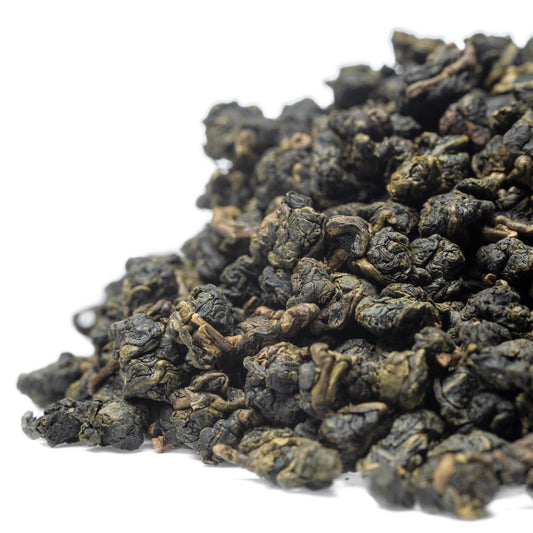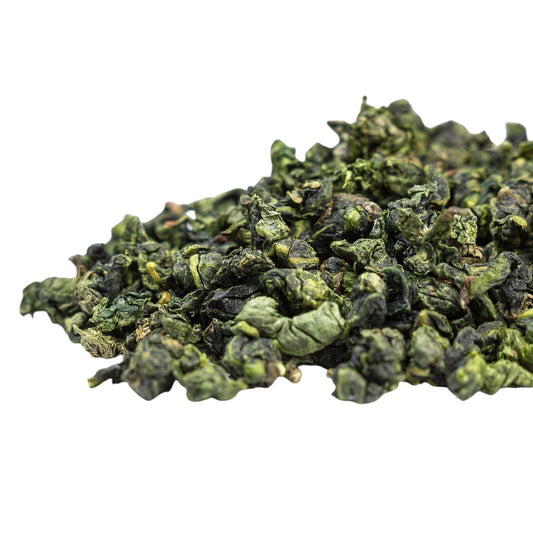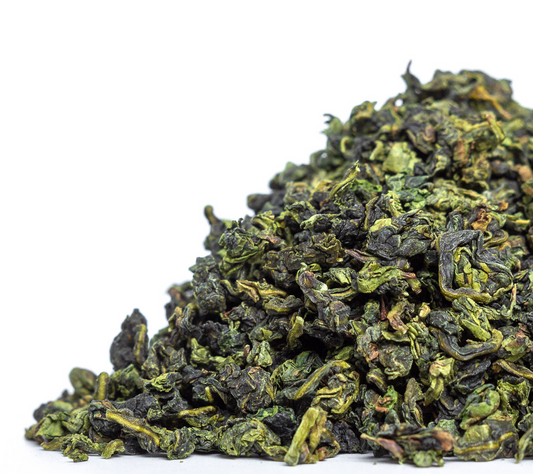Tie Guan Yin is one of the most distinctive and memorable light oolongs from China. Named after the bodhisattva Guanyin (Chinese: 鐵觀音, pinyin: tiěguānyīn, literally “Iron Goddess of Mercy”), this tea has a long history rooted in Fujian Province. Its story dates back to the Tang Dynasty.
How Tie Guan Yin Is Made
Tea leaves for Tie Guan Yin are harvested four times a year — once each season. The most prized harvest is in the fall, known for producing a deep and full-bodied flavor. Spring-harvested Tie Guan Yin stands out for its intense fragrance. Summer and winter harvests are considered less expressive.
While Tie Guan Yin is made in several areas of Fujian, the most respected teas come from Anxi County — the birthplace of this tea. The soil, elevation, and traditional processing here result in exceptional quality.
Only mature, large leaves are used. Thanks to its light oxidation, Tie Guan Yin retains more nutrients while developing a rich floral-spicy aroma.
Processing includes sun-drying, wilting, rolling, and shaping. Each step builds aroma and complexity, resulting in a tea that’s bold, elegant, and unmistakable.
Flavor and Aroma
Tie Guan Yin is known for its unique profile called Guanyin Yun or “Guanyin Rhyme,” made up of:
- Metallic echo in the throat — a clean, full-bodied taste with aromatic clarity
- Returning sweetness — a delicate sweetness that lingers long after your session ends
The flavor is fresh and floral with notes of lilac and light greenery. The infusion is nearly clear, with a soft golden hue.
It’s important to use short infusions, as oversteeping can make the tea bitter and astringent.
Brewing Tie Guan Yin

The best way to enjoy Tie Guan Yin is with multiple infusions using traditional Chinese methods.
Recommended Teaware
Brewing Instructions
- Preheat your teaware with hot water.
- Use 4g of tea per 100ml of water.
- First infusion: rinse quickly and discard.
- Second infusion: steep for 7–10 seconds, then pour into the chahai and serve.
- Increase steeping time by 5 seconds with each infusion.
- Continue until the flavor naturally fades.
Water temperature: 90–95°C (194–203°F). Porcelain enhances aroma and clarity of taste.
Final Thoughts
Tie Guan Yin is more than just a tea — it’s an invitation to slow down, pay attention, and enjoy complexity in every sip. Brewed with care, it offers clarity, sweetness, and a meditative rhythm that’s hard to forget.







